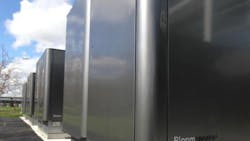DOE's ARPA-E Agency Spending $33 Million to Develop Fuel Cell Tech
ARPA-E Acting Director Dr. Cheryl Martin has announced $33 million in funding for 13 new projects aimed at developing transformational fuel cell technologies for low-cost distributed power generation. The projects, which are funded through ARPA-E’s new Reliable Electricity Based on ELectrochemical Systems (REBELS) program, are focused on improving grid stability, balancing intermittent renewable technologies, and reducing CO2 emissions using electrochemical distributed power generation systems.
“These 13 REBELS projects are an excellent example of how ARPA-E is developing innovative technology options to transform and modernize America’s evolving electric grid,” said Acting Director Martin. “Distributed generation technologies like these could fundamentally change the way America generates and stores energy.”
Fuel cells—or devices that convert the chemical energy of a fuel source into electrical energy—are optimal for distributed power generation systems, which generate power close to where it is used. Distributed generation systems offer an alternative to the large, centralized power generation facilities or power plants that are currently commonplace. While centralized power generation systems have an excellent economy of scale, they often require long transmission distances between supply and distribution points, leading to efficiency losses throughout the grid. Additionally, it can be challenging to integrate energy from renewable energy sources into centralized systems.
Current, state-of-the-art fuel cell research generally focuses on technologies that either operate at high temperatures for grid-scale applications or at low temperatures for vehicle technologies. ARPA-E’s new REBELS projects focus on low-cost Intermediate-Temperature Fuel Cells (ITFCs) emphasizing three technical approaches.
The first approach will deliver efficient, reliable ITFCs made from low-cost materials and system components for use in distributed generation systems. For example, SAFCell from Pasadena, California will develop low-cost solid acid fuel cells by reducing precious metals from the electrodes and developing new catalysts based on carbon nanotubes and metal organic frameworks.
The second approach in REBELS integrates both ITFCs and electricity storage at the device‐level rather than system‐level, enabling a battery-like response to transient power loads. For example, a University of South Carolina project team from Columbia, South Carolina will develop a ceramic-based fuel cell that will both generate and store electrical power with high efficiencies by incorporating a newly discovered ceramic electrolyte and nanostructured electrodes in one device to enable its operation at lower temperatures.
The third category develops ITFCs that also convert methane or other gaseous hydrocarbons into liquid fuels using excess energy. For example, Materials & Systems Research, Inc. from Salt Lake City, Utah will electrochemically convert natural gas into electricity or liquid fuel in a single step by using catalysts more effectively, and reduce fabrication costs by using a cost-effective process that can be readily scaled up for mass production.
